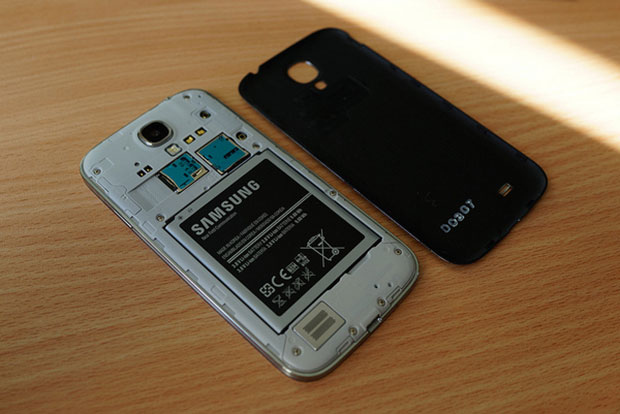Samsung Taps Graphene And Silicon To Double Lithium-Ion Battery Capacity
Most so-called breakthrough battery technologies we hear about come with tremendous claims, like quadrupling the amount of energy stored or being able to recharge 1,000 times faster. Heck, one day we might even run laptops on Mountain Dew (slight exaggeration). Samsung, on the other hand, makes a more modest claim with a new battery technology it just recently developed -- double the battery life.
Samsung's breakthrough came in the form of using a two-dimensional layered structure of graphene and silicon. Up to this point, silicon alone has been receiving a lot of attention in the formation of next generation lithium-ion battery anodes. However, there's a large volume change of silicon that occurs as batteries are drained and recharged, which "weakens it competitiveness in the volumetric energy density and cycle life," Samsung says. In other words, the batteries expand and contract when charging and discharging, a definite no-no for today's thin and light devices.

The solution? To coat the silicon with conductive graphene. Sounds simple enough, but it's actually quite complex because of the way graphene interacts with silicon.
"Typical graphene synthesis conditions require a reducing atmosphere that tends to strip the native Si oxide layer off the Si surface, and then drives a reaction between Si and decomposed carbon precursors to form SiC. Our initial approach of using methane (CH4) as a carbon precursor mixed with H2 was indeed unable to achieve a graphene growth on the Si NPs, thereby yielding only β-SiC," Samsung explains. "To overcome this limitation, we included carbon dioxide (CO2), a mild oxidant, in the CVD process along with CH4."
Using this method, Samsung has been able to create lithium-ion batteries with 1.5 to 1.8 times the density of what's available today. In a best case scenario, that translates into nearly double the battery life for devices like smartphones and tablets.
Like with other promising battery technologies, don't expect this one to be manifest on store shelves anytime soon. It's currently a research project that could take several years before reaching the commercial stage.
Samsung's breakthrough came in the form of using a two-dimensional layered structure of graphene and silicon. Up to this point, silicon alone has been receiving a lot of attention in the formation of next generation lithium-ion battery anodes. However, there's a large volume change of silicon that occurs as batteries are drained and recharged, which "weakens it competitiveness in the volumetric energy density and cycle life," Samsung says. In other words, the batteries expand and contract when charging and discharging, a definite no-no for today's thin and light devices.

Samsung is working on a battery technology that could offer twice the battery life of today's solutions
The solution? To coat the silicon with conductive graphene. Sounds simple enough, but it's actually quite complex because of the way graphene interacts with silicon.
"Typical graphene synthesis conditions require a reducing atmosphere that tends to strip the native Si oxide layer off the Si surface, and then drives a reaction between Si and decomposed carbon precursors to form SiC. Our initial approach of using methane (CH4) as a carbon precursor mixed with H2 was indeed unable to achieve a graphene growth on the Si NPs, thereby yielding only β-SiC," Samsung explains. "To overcome this limitation, we included carbon dioxide (CO2), a mild oxidant, in the CVD process along with CH4."
Using this method, Samsung has been able to create lithium-ion batteries with 1.5 to 1.8 times the density of what's available today. In a best case scenario, that translates into nearly double the battery life for devices like smartphones and tablets.
Like with other promising battery technologies, don't expect this one to be manifest on store shelves anytime soon. It's currently a research project that could take several years before reaching the commercial stage.

